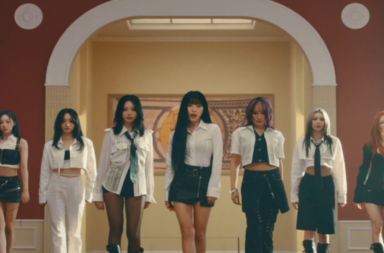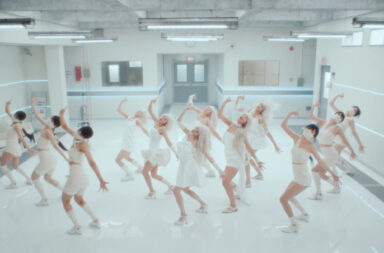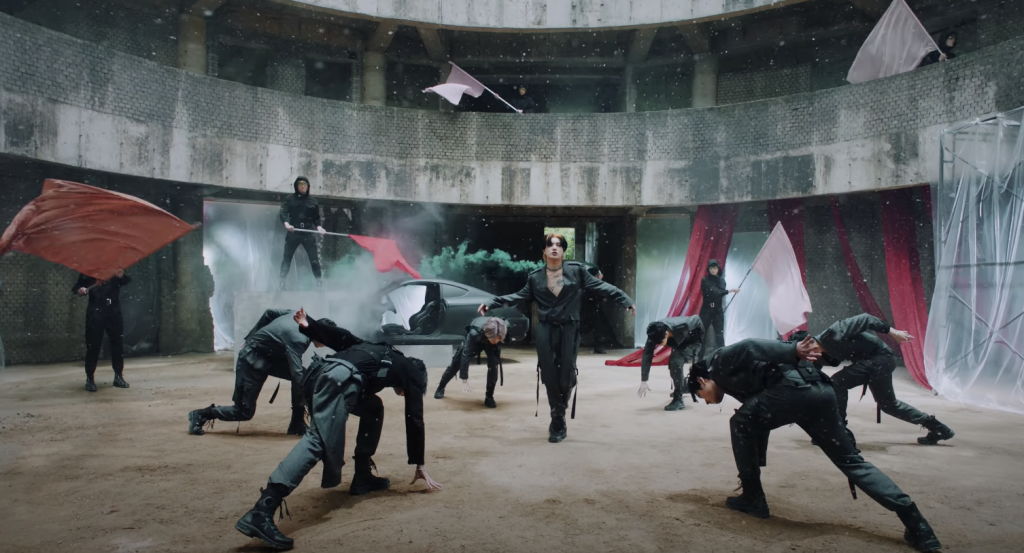
After members Seungwoo and Byungchan participated in Produce X 101, Victon has enjoyed a huge career boost. Their album Time of Sorrow (released in 2018) sold 18,015 units while Nostalgia (their first comeback after Produce X 101) sold 74,602 units. Victon’s mid-career rejuvenation presents a unique challenge: they must maintain their momentum and retain their new fans.
So far, Victon’s new releases have failed to establish a firm musical identity. Their March title track, “Howling,” succumbed to generic boy group tropes. “Mayday” is a great improvement, as Victon dabbles in interesting musical and cinematographic ideas. Ultimately, however, “Mayday” doesn’t establish an idiosyncratic sound or plotline.
Victon offer a solid take on the standard dark concept, but fail to distinguish themselves from countless other boy groups also offering similarly moody fare.
Based on the lyrics and teasers, the music video appears to be intended to portray Victon as trapped in an isolated place.
Faint light narrow sight
Maybe I’m lost
No matter how much I call you, I can’t reach you
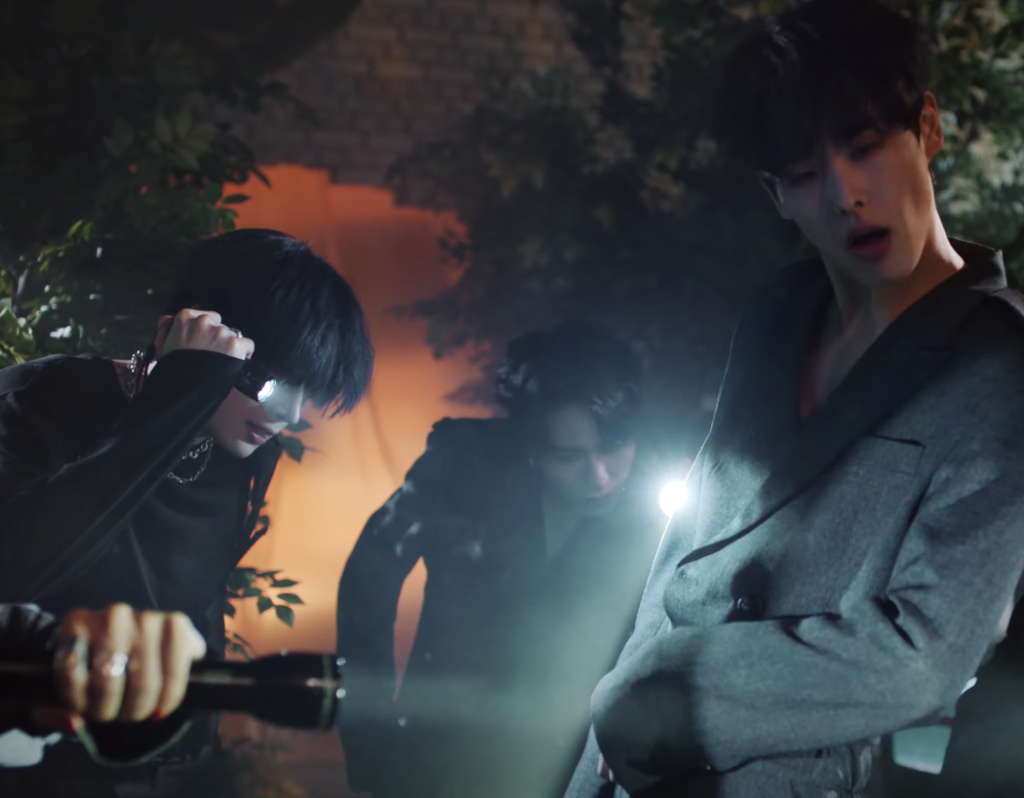
These pleading lyrics, coupled with repeated cries of “Fire off a mayday,” indicate that Victon are alone without their lover. They desperately seek help, sending distress signals, but receive no answer. They are trapped.
Yet, the music video does not fully flesh out these themes of isolation and heartbreak. Only one scene definitively points to the fact that Victon are searching for a way out of their dilemma. In the middle of the video, the members dance in a dark room with flashlights. They point the flashlights as if searching for an exit, as if trying to escape.
But the rest of the video sticks to vague, almost generic imagery: flashing lights, a bright red room, close-ups of the members. The video focuses on close-ups of Victon singing, rapping, dancing, and simply standing. There isn’t much action beyond dancing, so the video fails to craft a cohesive plotline.
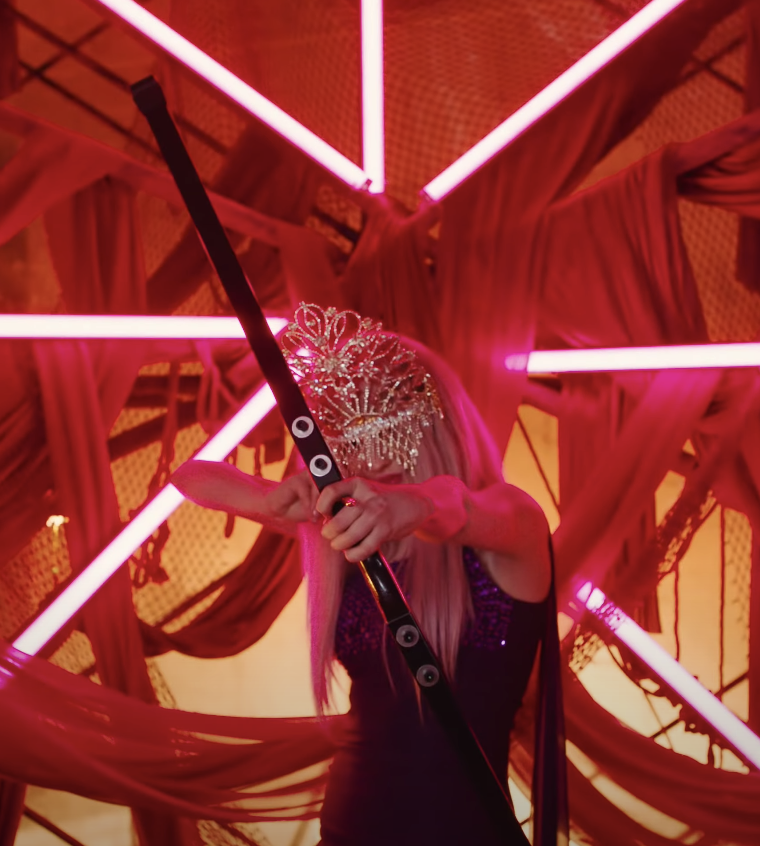
A woman wearing a long purple dress and golden headdress appears several times during “Mayday,” but her role in the video is unclear. She mostly stands behind the members without doing anything. In one scene, she raises a bow, but is she threatening Victon or protecting them? It’s hard to tell. She definitely seems to symbolize something, but what exactly is that something?
The telephone booth seems to be another possible symbol. Sejun stands in a clearing at the edge of a forest, surrounded by swirling fog. There is a telephone booth right behind him. Perhaps this indicates that Sejun is attempting to call for help, or that he is still connected to the outside world, or even that he is as out of place here as the telephone booth is in the woods. The telephone booth could indicate several different plot ideas. But Sejun is never shown actually using the phone; instead, the booth acts as decoration in the background. As such, the telephone booth offers no insights as to what the music video is actually conveying.
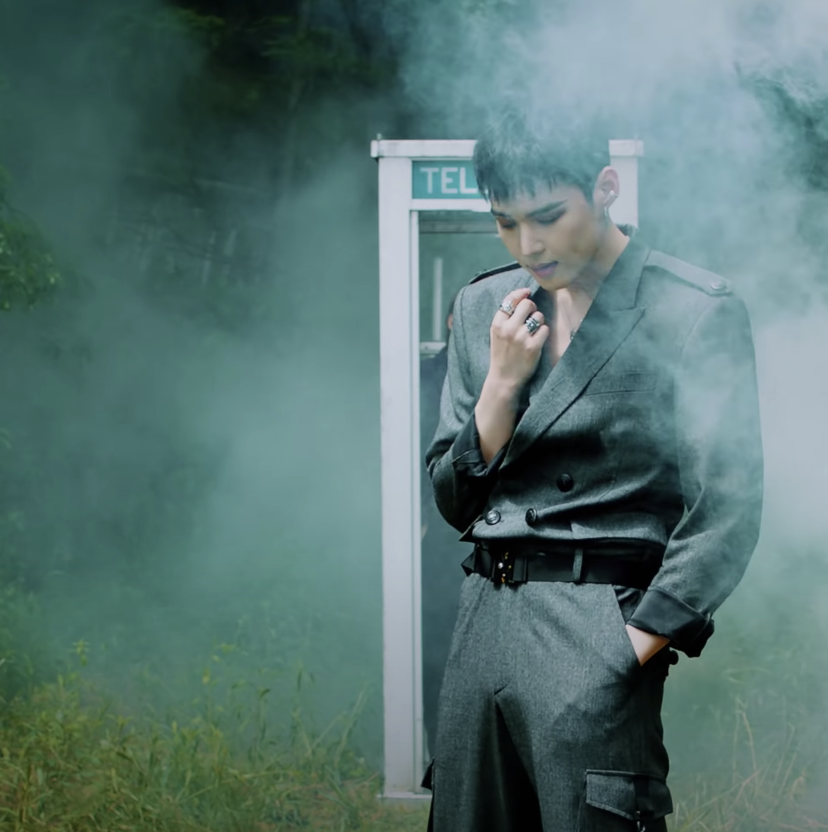
Likewise, the music video’s choices of color are intriguing but hard to decode. The video switches between black-and-white and normal colors. There is an all-red set, a dark blue galaxy scene, and constant green plants. But since the colors swap so often, the music video’s use of color theory appears to be only for aesthetic purposes. If the music video had been completely black-and-white in its first half, and then switched to full-color, perhaps the colors would have some symbolism. Instead, viewers are left with no clear message.
The music is — like the video — solid but unspectacular. “Mayday” does not succumb to the current trend of meandering verses that go nowhere. However, its chorus is overly repetitive, thus the song is interesting but unmemorable. A fully fleshed-out chorus with a robust melody would have elevated “Mayday” from decent to stunning.
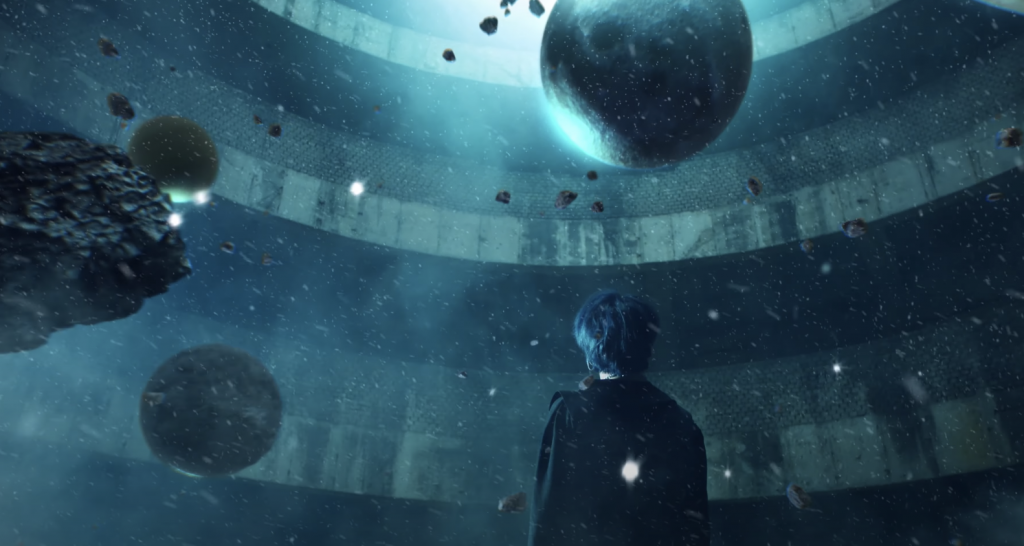
Despite its frustratingly vague concept, “Mayday” does have its strong points. The beat is interesting, consisting of muted lurches of bass underlined by whisper-quiet synths.
The camerawork is expertly done; the camera jerks and shifts quite frequently, which pairs well with the song’s lurching beat. And the opening scene is absolutely stunning: Seungwoo falls from the sky into an open-air colosseum-like building, as the air pulses with heartbeat monitor sound effects and dark creeping whispers.
During one scene, Seungwoo raps and then flicks his hand to the right; the camera follows his hand, panning to a full-group dance scene. So it almost looks like Seungwoo hit the camera and forced it to show the next scene — a very creative transition.
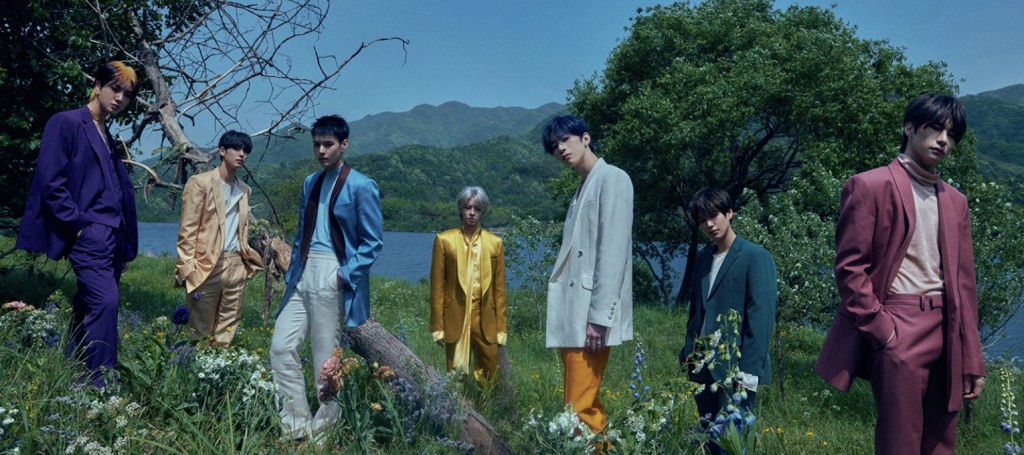
“Mayday” definitely warrants a listen; the song and video both have interesting ideas and great potential. By crafting a stronger, clearer plot and revamping the chorus, “Mayday” could have been a stunner. But instead, “Mayday” does not hold up well to subsequent listens. “Mayday” is a perfectly decent comeback, and likely won’t harm Victon’s burgeoning success.
But it’s a lateral step when Victon should be climbing to new heights. As the group continues to release more music, let’s hope that they fully capitalize on their newfound fame with an equally robust title track.
